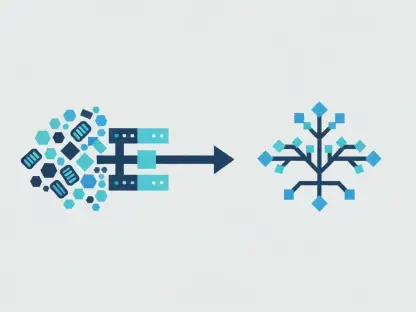The Rocky Mountain Lions Eye Bank (RMLEB) is a nonprofit organization responsible for procuring corneas in Wyoming and Colorado. Despite its noble mission, the organization faces significant operational challenges, regulatory issues, and a high-pressure work environment. These problems have led to numerous errors and inefficiencies in the procurement and distribution of corneal tissues from deceased donors, raising questions about the need for stricter oversight and transparent regulation in the tissue donation industry.
High-Pressure Environment and Employee Strain
The high-pressure environment at RMLEB is vividly exemplified by the story of William Lopez, who, under stress and emotional burden, chose not to contact his deceased friend’s spouse to request her eyes for donation. This incident sheds light on the kind of uncomfortable and emotionally challenging tasks that employees are often obligated to perform. The persistent pressure to meet demands paired with the emotional strain of dealing with grieving families creates a tense workplace atmosphere. Technicians at RMLEB frequently find themselves in emotionally charged situations, dealing with responses from gratitude to outright hostility from donor families.
Such demanding interactions compound the stress and emotional toll on technicians, leading to widespread feelings of disillusionment and high turnover rates among employees. The continuous pressure and high incidence of workplace errors only exacerbate the strain, leaving many employees feeling burned out and unsupported. The demanding nature of the job, combined with frequent errors and a lack of adequate training and support, contributes to a significant sense of dissatisfaction among the workforce.
Errors in Tissue Handling
Frequent errors in tissue recovery are a considerable issue at RMLEB, with mistakes such as removing eye tissue from the wrong body, damaging corneas during recovery, and collecting corneas from donors with high-risk family histories. These errors underscore lapses in training, oversight, and internal processes, ultimately compromising the quality and safety of the donated tissues. The high-pressure work environment further exacerbates these issues, as technicians are often rushed and under significant stress to meet demands.
The lack of adequate training and support further contributes to the problem, with new technicians starting with minimal instruction and facing daunting tasks that require precision and delicacy. Basic training methods, like using limes to simulate eye tissue, are insufficient in preparing technicians for the real-life conditions they will face. This inadequate preparation results in frequent errors during tissue recovery, adding to the inefficiencies and dangers highlighted within RMLEB’s operational practices. The cumulative effect of these lapses raises critical concerns about the regulatory oversight and competence of the organization, as well as the overall safety and quality of the tissues provided to recipients.
Lax Oversight and Self-Regulation
A stark disparity exists between the regulation of organ donations and tissue donations, with organ procurement organizations subjected to stringent oversight managed by the Health Resources and Services Administration (HRSA). In contrast, tissue banks like RMLEB operate under more self-policing mechanisms. This difference in regulatory frameworks highlights a major concern, as the lack of stringent oversight can lead to reduced transparency and accountability, raising significant questions about the quality and safety of the donated tissues.
The U.S. oversight system for tissue banks, primarily regulated by the FDA and industry groups, lacks the comprehensive regulatory framework seen in organ procurement. The absence of publicly available performance and outcome data in tissue banking further exacerbates the issue, hindering quality assurance and undermining public trust. This lax oversight framework permits a self-policing environment among tissue banks, which often results in insufficient accountability and elevated risks of errors in tissue handling. Without public transparency and robust oversight mechanisms, the assurance of safe, high-quality tissue donation practices remains dubious.
Employee Disillusionment and Turnover
A common issue plaguing RMLEB is the high turnover rates among inexperienced and inadequately trained technicians. The demanding nature of the job coupled with a high frequency of workplace errors contributes significantly to employee dissatisfaction and a pervasive sense of disillusionment. Many employees leave the organization due to continuous pressure and the emotional burden of the work, leading to a revolving door of staff members that further exacerbates organizational challenges.
New technicians often start with minimal training, tasked with the grim and delicate process of corneal removal from deceased bodies. To prepare these technicians, rudimentary training techniques like practicing on limes indicate an initial instruction level that falls short of adequately preparing them for real-life conditions. This deficiency in proper training and support results in frequent errors, reducing the overall quality of recovered tissue and perpetuating a cycle of operational inefficiencies. Employee disillusionment is compounded by the lack of adequate support structures within the organization, highlighting the need for a more comprehensive approach to training and employee welfare.
Interaction with Grieving Families
Technicians at RMLEB are often confronted with emotionally intense situations while interacting with the families of donors. These interactions can range from heartfelt gratitude to extreme hostility, adding another layer of stress to the already demanding roles of the technicians. The emotional and psychological toll of these encounters further complicates the technicians’ duties, as they must navigate the delicate balance of compassion and professionalism in highly sensitive circumstances.
The pressure to meet international demands, due to the U.S. having a surplus of corneas, only adds to the stress on technicians. This relentless demand exacerbates error rates in recovery procedures, further compromising the quality and safety of the donated tissues. The combination of emotional burden and operational pressures creates an environment ripe for mistakes and inefficiencies, highlighting the need for more robust support systems and comprehensive training programs to better equip technicians for their challenging roles.
Regulatory Discrepancies
The divergence in regulatory frameworks and transparency between organ and tissue donations presents a major concern. While organ procurement organizations adhere to strict regulatory standards managed by the HRSA, tissue banks like RMLEB operate under a more relaxed, self-regulating framework. This lack of stringent oversight can lead to decreased transparency and accountability, raising serious questions about the quality and safety of donated tissues.
The U.S. oversight system for tissue banks, primarily under the purview of the FDA and industry groups, lacks the rigorous standards applied to organ procurement. The absence of publicly accessible performance and outcome data in tissue banking further complicates efforts to ensure quality assurance and maintain public trust. This discrepancy in regulatory frameworks fosters a self-policing culture within tissue banks, where accountability is insufficient, and the potential for errors and mishandling remains high. A unified regulatory approach that enforces consistent standards and transparency across both organ and tissue donations is necessary to enhance the quality and safety of tissue banking practices.
Economic and Operational Pressures
The Rocky Mountain Lions Eye Bank (RMLEB) is a nonprofit organization dedicated to procuring corneas in Wyoming and Colorado. Despite its commendable mission of helping restore sight, RMLEB confronts several significant operational challenges. The organization must navigate complex regulatory issues to ensure compliance, all while operating in a high-pressure environment. These combined factors have unfortunately led to numerous errors and inefficiencies in the process of acquiring and distributing corneal tissues from deceased donors.
The errors and inefficiencies not only hinder RMLEB’s ability to fulfill its mission effectively but also raise serious concerns about the broader tissue donation industry. There is growing scrutiny and calls for more stringent oversight and transparent regulation in how tissue donations are managed. Such measures could help address the critical issues faced by RMLEB and similar organizations, ensuring that the donation process is both ethical and efficient.
Improving oversight and regulation could enhance transparency in the tissue donation sector, ensuring that the noble goals of organizations like RMLEB are met without compromising their operational integrity. By addressing these challenges, RMLEB can continue to make significant contributions to eye care while maintaining trust and efficiency in the donation process.









